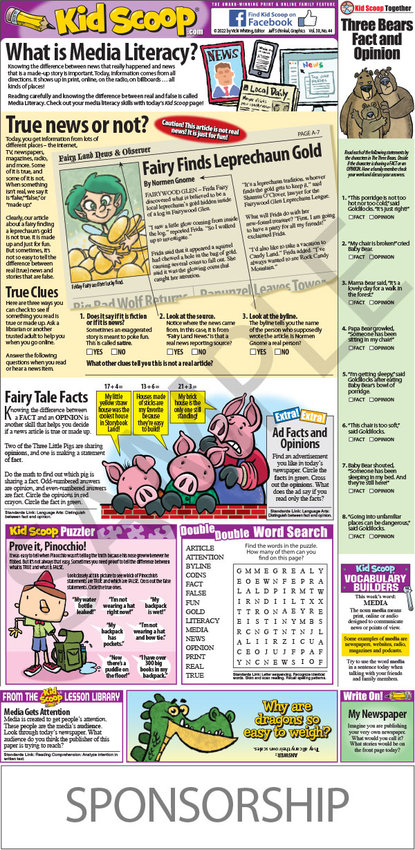
Words are bombarding children and families all from many directions, including your newspaper. What’s true? What’s accurate? What’s believable?
Here’s help! Kid Scoop introduces Media Literacy pages that are not just for children — all members of the family can have fun learning to detect fact from fantasy.
Take a look at this initial Kid Scoop media literacy page for young children. Is it “True news or not?”
Your newspaper is often the first encounter a child has with professional journalism. Equip the kids in your town with the skills to read your reports carefully and trust in your journalism. Start them off right with basic analytical techniques they can use all their reading lives. Add Kid Scoop Media Literacy pages to your content.
The literacy activities in these Kid Scoop media literacy pages focus on three analytical elements:
For assistance in uncovering hidden sources of funding for Kid Scoop, contact us. Year-round sponsorship of Kid Scoop will give your community the gift of media literacy.
To learn more about Kid Scoop, contact Dan “Patio” Dalton at 909-793-9890.